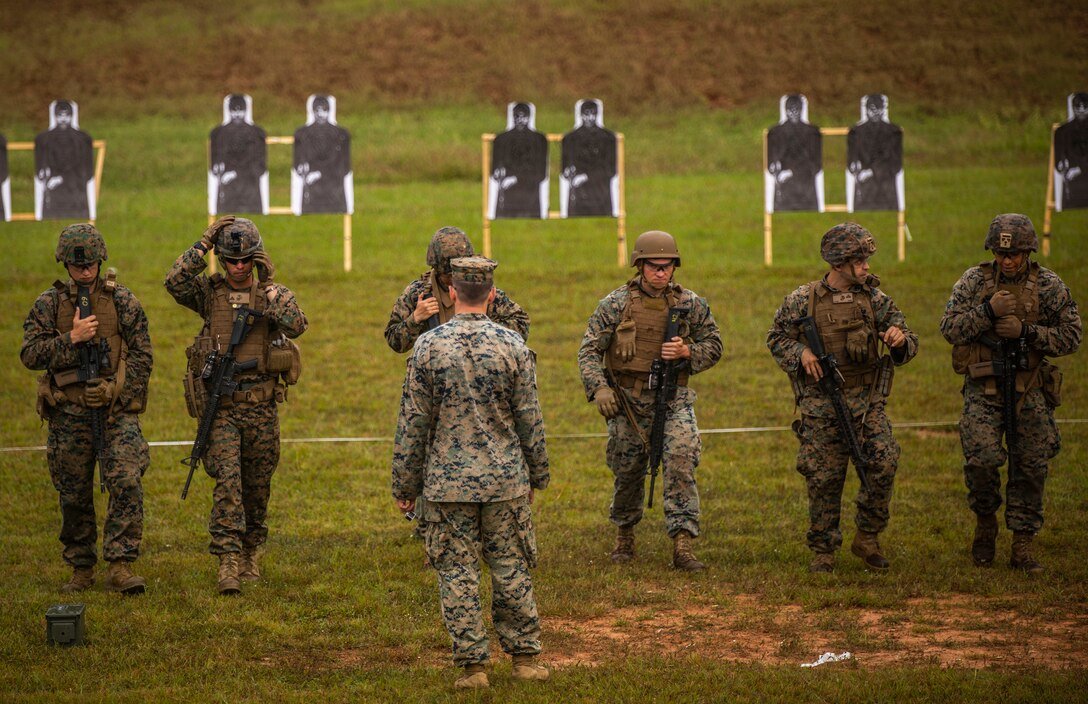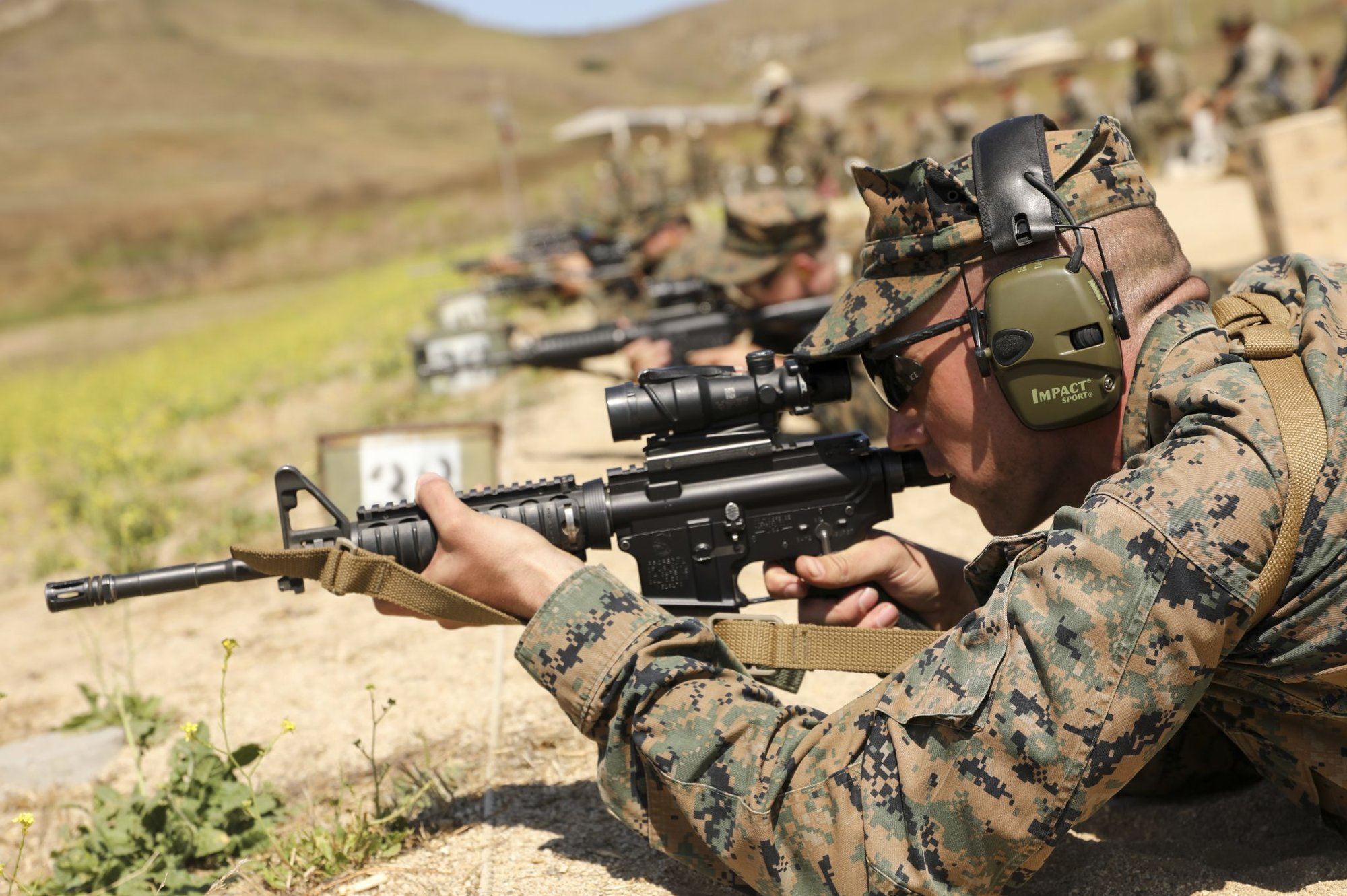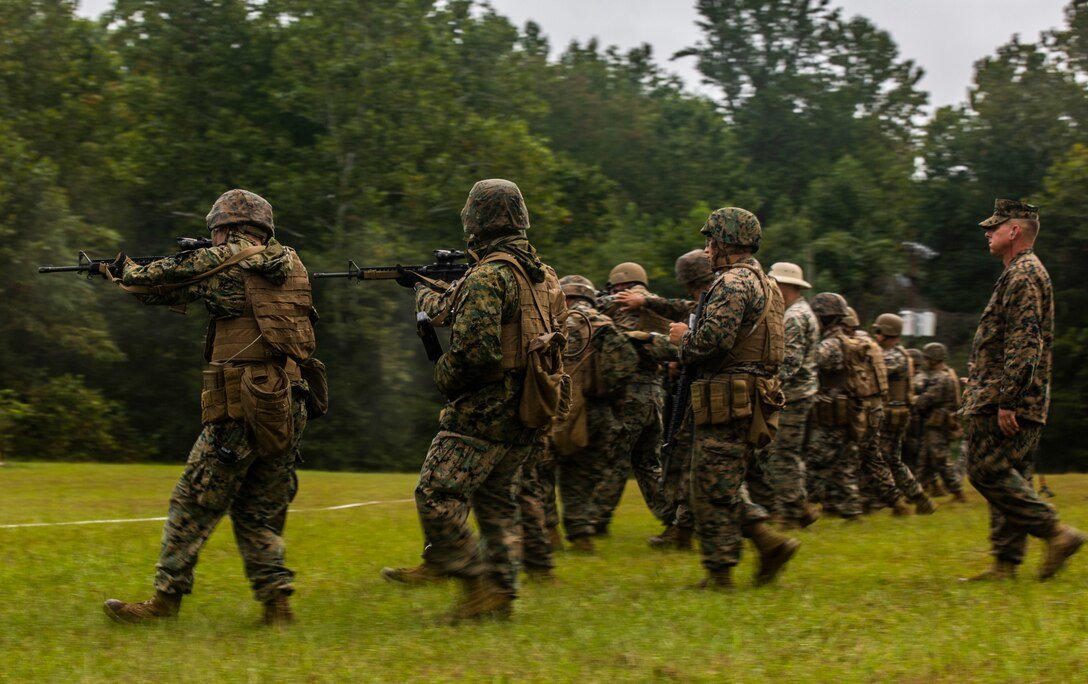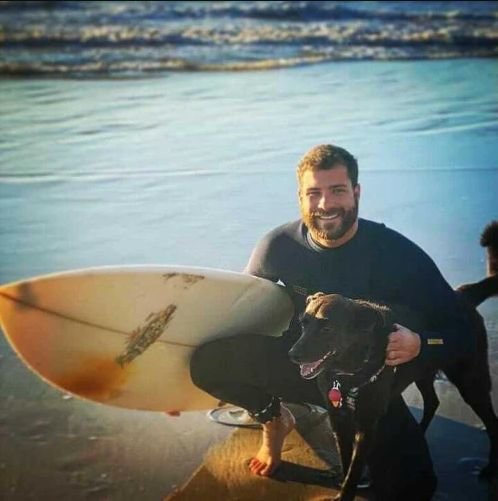New Marine Rifle Course Redefines What It Means To Be a ‘Rifleman’

Marines from the Combat Marksmanship Coaches Reserve were some of the first Marines to undergo the Corps’ new Annual Rifle Qualification at Marine Corps Base Quantico in late September 2021. US Marine Corps photo by Lance Cpl. Samwel Tabancay.
Starting Oct. 1, the Marines began judging their marksmanship in a new way. Marines will no longer shoot their qualifying courses of fire in the traditional order of prone, kneeling, and standing positions. To qualify as riflemen, Marines now face a more pragmatic “train like you fight” Annual Rifle Qualification.
“Dating back to the early 1900s with only minor changes from its original form, the current annual rifle training qualification has been unchanged,” said Chief Warrant Officer 4 Anthony Viggiani, Marine gunner at US Marine Corps Training and Education Command. “This has been the same qualification that every Marine shoots throughout their entire career, until now.”

The combat-oriented three-day course will require Marines to shoot in their body armor, using bipods, backpacks, and support barricades to measure their lethal effectiveness.
According to a Marine Corps press release, the new course has been in development since 2016 and will fully replace the Corps’ traditional sport-shooting approach, emphasizing lethality and positional shooting.
Ken Campbell is the CEO of Gunsite Academy, a leading firearms education and training institution in Arizona. Campbell spent 35 years in law enforcement, including 17 years with SWAT.
A rifle course centered around a “real-world” mentality will better prepare Marines for real firefights, Campbell said.
“The battlefield is not the place to learn,” Campbell said. “You need to learn it in the training environment so when — not if — you need it, you have it in your tactical tool box instead of having to figure it out on the fly.”

The old course, which included shooting from the prone, sitting, kneeling, and standing positions, is unrealistic, Campbell said, especially without the weight and awkwardness that comes with body armor and a helmet. The new qualification has Marines shooting from alternate shooting positions and behind barricades at stationary and moving targets at distances from 25 to 500 yards.
For now, the old test will remain for entry-level Marine shooters. Recruits at both recruit depots and newly commissioned officers at The Basic School will continue to qualify with the Corps’ long-standing marksmanship course.
Cpl. Kyle Kupkufske was one of the first Marines to face the new rifle course while qualifying as a combat marksmanship coach at Marine Corps Base Quantico in late September.
“There is absolutely no doubt in my mind that I can go back and teach my Marines how to effectively shoot this course of fire and have them come out as a better marksman,” Kupkufske said.
The new scoring method measures the lethal effects of rounds on each target by grading them in three categories. A round that “destroys” a target impacts the chest or face. A “neutralize” shot lands within a circle surrounding center mass, while a “suppress” shot is anything on target but outside of the “destroy” or “neutralize” zones.
Staff Sgt. Martin Lucero, an instructor and competitor with the Marine Forces Reserve Marksmanship Training Unit, said that, unlike in the traditional rifle qualification course, shooters will now start at 500 yards and work their way closer to the target.
“You receive destroys for the 500 (yard line) all the way to the 25 yard headshots; you either destroy, neutralize or you suppress the threat,” Lucero said in a press release. “After receiving this training and conducting this qualification, there is no doubt about it, every Marine will be more lethal in combat.”
Read Next:

Dustin Jones is a former senior staff writer for Coffee or Die Magazine covering military and intelligence news. Jones served four years in the Marine Corps with tours to Iraq and Afghanistan. He studied journalism at the University of Colorado and Columbia University. He has worked as a reporter in Southwest Montana and at NPR. A New Hampshire native, Dustin currently resides in Southern California.
BRCC and Bad Moon Print Press team up for an exclusive, limited-edition T-shirt design!
BRCC partners with Team Room Design for an exclusive T-shirt release!
Thirty Seconds Out has partnered with BRCC for an exclusive shirt design invoking the God of Winter.
Lucas O'Hara of Grizzly Forge has teamed up with BRCC for a badass, exclusive Shirt Club T-shirt design featuring his most popular knife and tiomahawk.
Coffee or Die sits down with one of the graphic designers behind Black Rifle Coffee's signature look and vibe.
Biden will award the Medal of Honor to a Vietnam War Army helicopter pilot who risked his life to save a reconnaissance team from almost certain death.
Ever wonder how much Jack Mandaville would f*ck sh*t up if he went back in time? The American Revolution didn't even see him coming.
A nearly 200-year-old West Point time capsule that at first appeared to yield little more than dust contains hidden treasure, the US Military Academy said.












